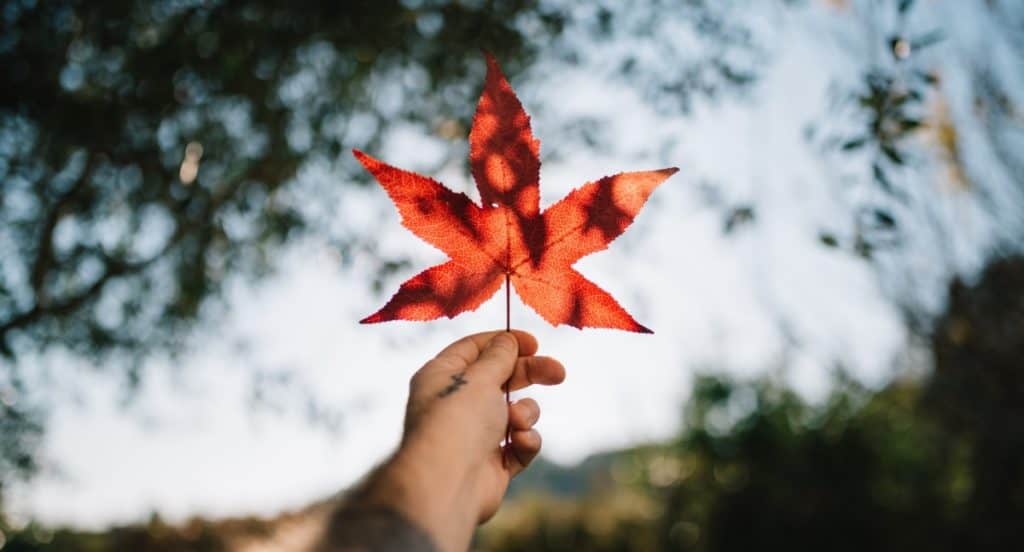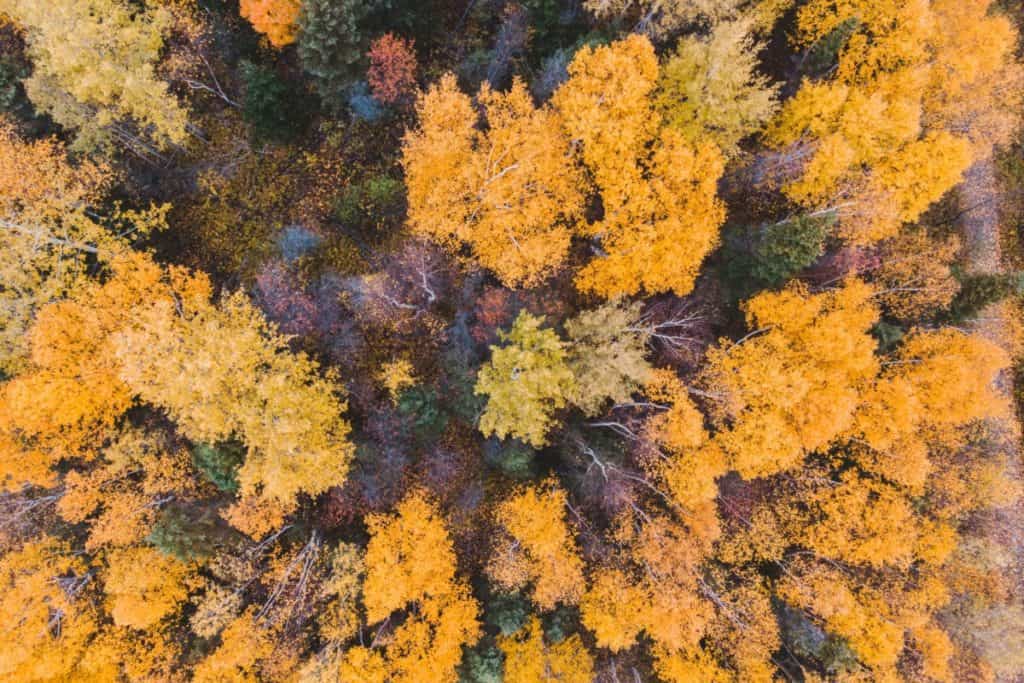
Canada is worldwide famous for its delicious maple syrup. Maple products are considered symbolic of Canada, and the sugar maple’s leaf is even represented on the country’s flag. The colorful Canadian summer would not be possible without its maple trees.
Maple syrup is a milestone in Canada’s history. It helped the ingenious people to work more independently and gave them a source to earn money. Until today the maple industry is one of the most critical sectors in Canada and provides an opportunity of income for people in the most remote areas in the world. The strict Canadian control system ensures the high standard of its products.
In this article, I’ll explain everything you need to know about Canada’s most popular product.
Quick navigation
The source- maple trees
The quality of the maple syrup always depends on the source. There are three predominant species of maple trees which are used in Canada to produce the high-quality maple syrup:
sugar maple – Acer saccharum
Sugar maple or also known as rock maple can be found in eastern Canada in the hardwood forests.
Most of the trees grow around Nova Scotia, in the west and the south of Quebec, in central and southern Ontario, and the area which stretches to southeastern Manitoba around Lake of the woods.
black maple – Acer nigrum
Black maple is closely related to the famous sugar maple and treated as a subcategory.
Black maple trees grow in the southeast of Canada, mainly in southern Ontario.
red maple- Acer rubrum
The red maple tree is, without a doubt, the most famous one of all three.
The red maple grows in the southeastern area of Manitoba around the Lake of woods. It can also be found at the border with Ontario and Minnesota and the east of Newfoundland.
The maple belt
The geographically and climate benefits of four provinces contributed to the high amount of maple trees.
Ontario, Quebec, New Brunswick, and Nova Scotia together form the so-called Maple Belt. This area of Canada is blessed with an enormous variety of trees which produce the highest quality syrup.
The history of maple syrup

The first people who produced maple syrup and maple sugar were the indigenous people in northeastern North America.
The first nations called it ”sinzibuckwud” which means “drawn from the wood.”
It is not know how maple syrup production began, as different sources tell different stories, but various legends exist.
One of them is that aboriginal tribes developed a ritual to celebrate the Sugar Moon, which is the first full moon in spring.
The indigenous people celebrated this day with a Maple Dance. Furthermore, many of the aboriginal dishes replaced the salt with maple sugar or syrup. A lot of the first nations saw maple syrup as a source of energy and nutrition.
When the first European colonization arrived in northeastern North America, the local indigenous people showed them how to produce maple syrup. The collaboration with the Europeans was essential for the first nations as the trading and production of maple syrup was their only source of income during the colonization. While the first nations had enough knowledge about the maple syrup, the colonialists knew how to distribute the sugar around the world.
The commercial maple sugar production began among settlers in the late 1700s and is one of the oldest industries in Canada.
The colonists improved the way maple syrup was produced and invented more effective ways to increase the production rate.
They started to drill holes into maple trees and fitted wooden spouts through which sap flowed. It then could be easily collected. The juice was transported into a sugar house. The fluid was boiled down to syrup in large metal kettles over a fire.
Over the next years, improvements in evaporation methods decreased the amount of time massively it took to boil down the sap. The transportation from the fluid to the sugar house was also improved to make work more comfortable and more efficient.
Around 1850 – during the times of the American civil war, syrup makers started to use large metal pans which made the production process more manageable.
A year later, cane sugar replaced was the primary dominant sweetener in the US and replaced the widely used maple sugar.
More effort was needed to distribute the product, and the main focus was to marketing the maple syrup.
Over the next 50 years the production process of maple syrup and sugar products as modernized to decrease the costs and to make the sugar products more affordable.
During the second world war, due to a shortage of sugar, the general public was advised to replace the ordinary sugar with maple products. More cookbooks and recipes mentioned the use of maple products instead of white sugar and increased sales dramatically.
Maple syrup today
Canada produced more than 73 million kilograms of syrup in 2016, which is more than 80 percent of the world’s maple syrup.
Quebec is the world’s largest producer. The vast majority of Marple products, around 70 percent of the world market, is produced in this area of Canada. In 2015, Quebec was accountable for over 90 percent of the maple syrup produced in Canada.
New Brunswick produced nearly 5 percent, and Ontario roughly 4 percent. Nevertheless, almost 95 percent of all the exported Canadian maple syrup originated from Quebec.
Just 5 percent of the overall exported syrup originated from New Brunswick.
Canadian maple syrup is one of the most critical industries for Canadian export. In 2016 the export of maple products made more than 362 Candian Dollar. Around 60 percent of the commodity goes to the United States and nearly 10 percent to Germany.
In 2016, Quebec counted around 7,300 registered and licenced maple producers. Overall there were 13,500 farmers, who made collectively over 30 million liters of syrup.
The maple syrup industry is not just crucial for Canada’s economy; it also creates a lot of jobs. The production of maple products gives people, especially in remote areas and the indigenous people a chance to own their own business and earn enough money to make a living. Even though the producers receiving allotments, Canada still fights a substantial black market of syrup sales. Especially the high-quality syrup of Quebec is known to be liquid gold. A barrel in Quebec currently is worth up to $1,800, which is about 25 times more than oil.
Grades of syrup

In the past, each state followed its own regulations and laws on the classification of maple products.
After years of negotiation, a new grading system was finalized in 2014.
Following efforts of the International Maple Syrup Institute (IMSI) producer associations, adjusted their laws regarding the classification of maple syrup. After harmonizing the system, the grading of syrup is now more transparent for the end consumer.
Grade A syrup ensures the highest quality of sugar and is classified in different subcategories:
- Golden coloured with a delicate taste
- Amber coloured which has a unique rich taste
- The dark colour and a more robust taste
- The very dark colour and a powerful taste
The syrups are all processed the same way. The different colours mostly occur during different times of the season. In general, the lighter in coloured sugar with milder flavour occurs during the earlier seasons, while the darker coloured maple syrup with more robust flavour can be found as the season progresses.
Health benefits of maple syrup
High-quality maple syrup is used around the world, and widely known for its health benefits.
Maple syrup is rich in vitamins and nutrients, which helps to boost your immune system. Its antioxidant properties also help to protect your body from free radicals.
Some of the essential nutrients found in high-quality maple syrup are zinc, Potassium, manganese, thiamine, calcium, iron, magnesium, and riboflavin.
Manganese is vital to ensure a normal function of your muscular system and helps in energy production. Calcium is strengthening your bones and contributes to healthy teeth.
Riboflavin, on the other hand, is needed to ensure the normal function of your metabolic processes. Magnesium can lower the risk of heart disease, and Potassium is essential to maintain healthy blood pressure.
Furthermore, maple syrup has a high amount of zinc. Zinc is essential for a lot of functions in your body.
It is hugely beneficial for a healthy heart. It is also an important antioxidant which is needed for cellular growth and regeneration.
1/4 cup of high-quality maple syrup covers over 40 percent of your daily requirement of zinc as well as 100 percent of your daily requirement of manganese.
The Canadian maple is one of the most popular products around the world and also one of the healthiest alternatives to regular sugar.
Conclusion
The next time we enjoy our pancakes with Canadian maple syrup or sweeten our tea with it, we can be sure that we support one of the oldest industry sectors in the world and we will experience the uniqueness of a natural product which brings the taste of the Canadian summer in our homes.
